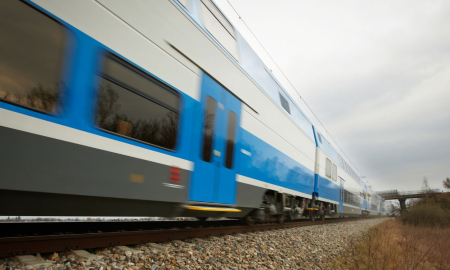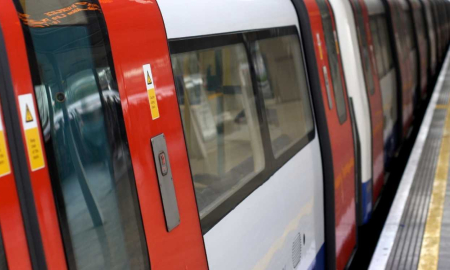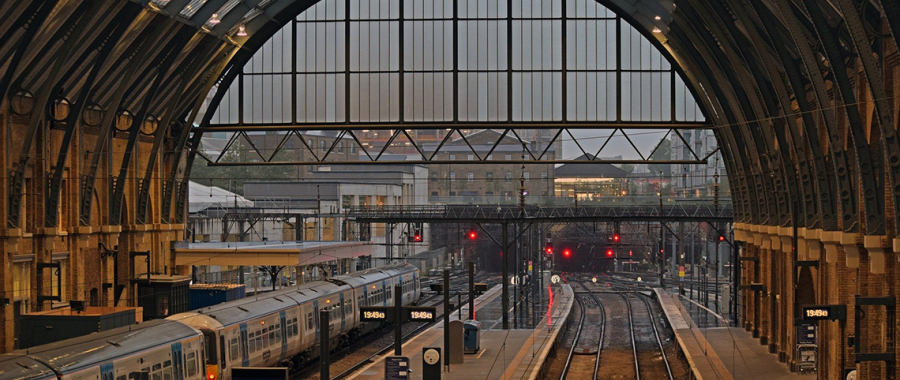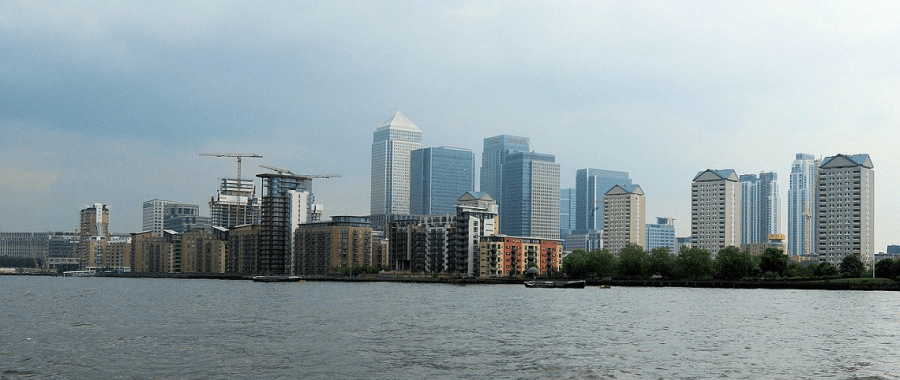Rail Surveys – What You Need and Why Your Project's Success Depends On Them
When undertaking any form of construction or upgrade works in proximity to the UK’s rail infrastructure, a range of surveys are first required.
With the technology and techniques used in surveying increasing in capability and complexity year on year, do you fully understand the types of surveys required and how they should be carried out to ensure best practice?
Neil Yakes, survey manager at SOCOTEC Monitoring – formerly ITM Monitoring – has over 35 years’ experience developing innovative solutions to complex surveying problems. Below he explains why surveys are required for rail projects, what is involved in each type of survey and why they are important to the overall success of a rail project.
Seeking Project Approval With the Help of Line and Level Correlation Surveys
Before any project in the vicinity of a rail track or other rail asset is approved, agreement in principle to carry out the works is required from the owners of the asset, for example Network Rail. The contractor intending to carry out the works is required to seek this agreement which, in the case of Network Rail, is known as the Basic Asset Protection Agreement or BAPA.
To be eligible to seek this agreement, it is often a necessity to carry out a line and level correlation survey. This provides the contractor with information about the exact positioning of the running rails or tunnel structures in relation to the proposed development works. Linking the resulting data with an existing topographic or measured building survey on the same grid can predict the estimated impact to any rail infrastructure. With the ability to demonstrate likely impact on adjacent rail structures, contractors can then approach the asset owners to seek the required permission for the project.
Once all the necessary surveys have been completed, a survey control network can be established at the start of a project which creates a framework of coordinated points that all parties can agree on. This can then be used as a reference point to check the impact of any works.
Benchmarking Pre-Existing Conditions
Once the line and level correlation survey has been completed and project approval has been granted, a condition survey should be carried out prior to any works beginning to provide a photographic schedule of the existing conditions. This will identify any pre-existing errors or defects on the tracks, tunnels or other structures surrounding the site. Carrying out another condition survey at the end of the project and cross-referencing this against the one conducted prior to works commencing acts as a form of insurance, covering the contractor should any pre-existing defects be wrongly linked to construction works.
If these pre- and post-works condition surveys aren’t carried out, there is no evidence to refer to and a contractor could be held liable for any previous damages incorrectly assumed to be the result of the works, which could be costly for the contractor to rectify.
Following a pre-works condition survey, track geometry surveys can proceed. This measures the cant and twist of the running rail and provides insight into the current rail quality. The cant and twist must be within specific parameters to meet standards, and with this information, a contractor can determine whether it is safe for trains to run or if there are any alignment issues. If problems are detected they can be corrected prior to works beginning.
Maintaining Safe Clearance Tolerances
Due to the nature of most tunnel structures – and other rail assets and track-side furniture such as platforms, cuttings and bridges - there is often very limited space between the structure and the passing trains. Safe clearance tolerances need to be determined and maintained.
Asset owners have set parameters inside structures such as tunnels, within which no equipment or structures may intrude to ensure that the passage of trains is kept clear. This applies to everything including signal posts, cables and pipes. In addition, when trains and other rail vehicles move along a track, they experience vertical and lateral movement. The space that trains occupy when in motion – including the effects of tilt, sway and cant - is known as the kinematic envelope. Both the parameters set by asset owners and the kinematic envelope require consideration, to ensure that construction works haven’t affected clearance tolerances.
Clearance assessments can be carried out at the beginning and end of a project using a tunnel gauging survey, which provides a simulation of a train passing through the section of track being surveyed and highlights any areas where tolerances may have been pushed beyond acceptable limits. Should a client wish to monitor the impact of works on clearance tolerances more closely, SOCOTEC Monitoring can continuously monitor clearance levels to detect any changes as a result of construction works. This is being carried out as part of the Barking Riverside Extension project.
Ensuring Overhead Line Equipment Remains Out of Reach
In addition to ensuring that structures and track-side furniture are kept at a safe distance, overhead line equipment (OLE) – wires, for example - requires a separate height and staggers survey. This identifies the current quality and positioning of the OLE prior to works commencing and is cross-checked at the end of the project to ensure they remain within acceptable limits.
Wires require this separate survey due to their physical qualities. Whereas pipes and signals are solid structures, wires will slack and sway depending on the length between each connection point and are also affected by the speed of trains and the curvature of the tunnel. As the position of the wire at the connection point is not the same as the middle point, measurements are taken at both points and then correlated with the height of the rail.
Why Choose SOCOTEC Monitoring as Your Survey Provider
Due to the range of surveys required for a typical rail project, unless you have someone in your team with the relevant experience, organising them can add a lot of time and admin to someone’s already busy workload. When delivering surveying services, SOCOTEC Monitoring aims to provide a Seamless? service so that you are relieved of this pressure.
The SOCOTEC Monitoring team will arrange everything on your behalf, including access, risk assessments, TARA (Threat Assessment and Remediation Analysis), health and safety documentation, safe working procedures, and more. All SOCOTEC Monitoring staff are appropriately trained and, with years’ of experience working on rail infrastructure, you can trust in the quality of our work.
If you have a surveying requirement to discuss, please get in touch.






Add new comment